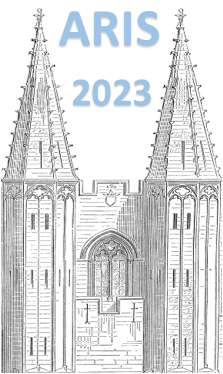Orateur
Description
Neutrinos are produced as a result of the nuclear fusion reactions happening inside the Sun. Precise measurement of the solar neutrino flux is crucial for a better understanding of the various nuclear reactions taking place in the Sun but also gives us important information about the Sun's core [1]. The geochemical experiment LOREX (LORandite EXperiment) [2], proposed by Freedman and collaborators aims to determine the long-time average (over ~4.3 million years) of the solar pp-neutrino flux Φν through the neutrino-capture reaction. The interaction cross-section of νe and 205Tl nucleus is important for the determination of the neutrino flux in the LOREX project. To determine the interaction cross-section, the half-life of bound state β- decay of bare 205Tl81+ nuclei is required as the two processes share the identical nuclear matrix element.
In this talk, we report on the first direct measurement of the bound-state beta decay of 205Tl81+ ions [3]. The experiment was performed at GSI, Darmstadt in 2020, wherein the entire accelerator chain was employed. Highly charged ions 205Tl81+ ions were produced with the projectile fragmentation of 206Pb primary beam on 9Be target, separated in the fragment separator (FRS), accumulated, cooled, and stored for different storage times (up to 10 hours) in the experimental storage ring (ESR). The experimentally measured half-life value agrees with the theoretically predicted values by E. Braun [3] and deviates from the theoretically predicted values [4,5]. The interaction cross-section between neutrino and 205Tl nucleus is determined. The impact of our result on LOREX project will be discussed in this talk.
This research has been conducted in the framework of the SPARC, ILIMA, LOREX, NucAR collaborations, experiment E121 of FAIR Phase-0 supported by GSI. The authors received support from the European Research Council (ERC) under the European Union’s Horizon 2020 research and innovation program (Grant Agreement No. 682841 “ASTRUm”).
[1] Wurm, Michael: Solar neutrino spectroscopy. Physics Reports 685, 1-52 (2017). 10.1016/j.physrep.2017.04.002
[2] Melvin S. Freedman et al., Solar Neutrinos: Proposal for a New Test. Science 193, 4258: p. 1117 (1976).
[3] Ragandeep Singh Sidhu, Ph.D. Thesis, Ruprecht-Karls-Universität, 2021.
[4]1986, Proceedings of the International Symposium, Weak and Electromagnetic Interactions in Nuclei, Heidelberg, edited by H. V. Klapdor (Springer, Berlin), p. 47.
[5] K. Takahashi et al., Phys. Rev. C, 36, 1522, 1987.
[6] S. Liu et al., Phys. Rev. C, 104, 024304, 2021.

